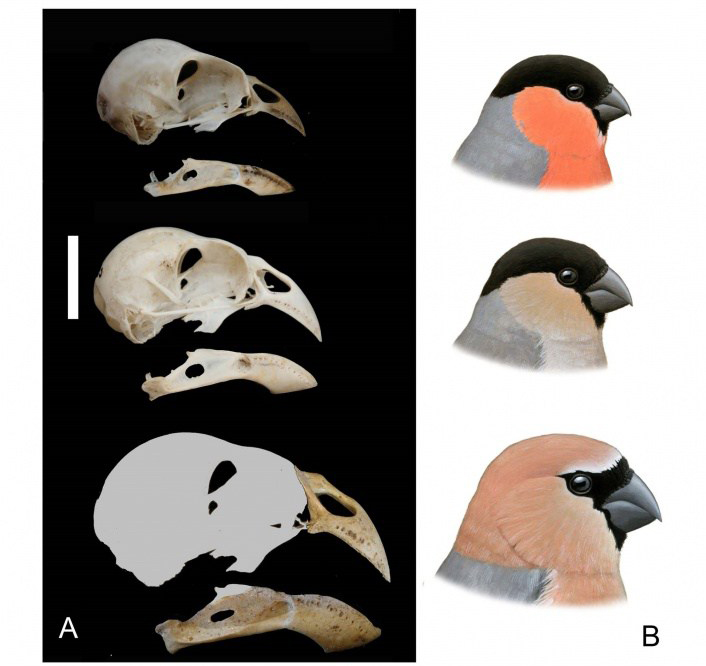An international team of scientists has discovered the bones of a now-extinct bullfinch species in the Azores.
The remains were found inside a small cavity in the crater of a volcano in the south-east of Graciosa, one of the archipelago’s central island group.
The new species was a typical bullfinch, with a short, robust beak, although it has been identified as the largest of its genus due to the impressive size of the skull remains found. It has been named Pyrrhula crassa.
As with many other now-extinct island species, the arrival of humans and the associated introduction of alien predators appears to have accounted for the demise of Pyrrhula crassa, this occurring just a few hundred years ago.
Project leader Josep Antoni Alcover, from the Mediterranean Institute for Advanced Studies (IMEDEA, CSIC-UIB), explained: "It is the first extinct passerine bird described in the archipelago, and it won't be the last.
"Its short and wide beak was not just considerably bigger, but also relatively higher than that of [Eurasian] Bullfinch or [Azores Bullfinch] from São Miguel, with a very robust configuration reminiscent to an extent of the beak of a small parrot."

Comparison of Eurasian Bullfinch (top), Azores Bullfinch (middle) and Pyrrhula crassa (bottom). A: skull and mandible lateral view. B: aspect (note: artist's impression of possible appearance of P crassa). Credit: Pau Oliver.
The Azores were colonised by the Portuguese in the 13th century. Just as has happened on many other islands, such as the Canaries or Madeira, many native species disappeared throughout the last millennium due to the arrival of humans, along with attendent invasive species such as rats and cats. Human colonisation led to the destruction and burning of the islands' habitats in which people started to settle, and they impacted on the birds that were part of the indigenous fauna. Pyrrhula crassa was no exception, finding itself affected until it became extinct.
The introduction of invasive plant species depleted the extent of native laurel forest on Graciosa. Similar problems almost led to Azores Bullfinch’s demise, although intensive conservation measures have seen that species’ fortunes reversed, and it is now increasing once again in the eastern highlands of São Miguel. Although the remains of Pyrrhula crassa have so far only been discovered on Graciosa, it seems possible that it also inhabited other islands in the Azores archipelago.
Reference
Rando J C, Pieper H, Olson S L, Pereira F, Alcover J A. A new extinct species of large bullfinch (Aves: Fringillidae: Pyrrhula) from Graciosa Island (Azores, North Atlantic Ocean). Zootaxa, 2017; 4282 (3): 567 DOI: 10.11646/zootaxa.4282.3.9


